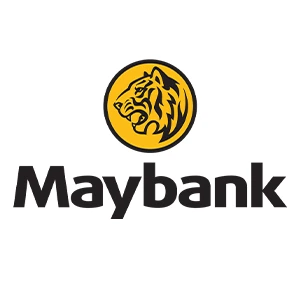Malaysia’s financial market is abuzz with the steady allure of blue chip dividend stocks, offering a perfect blend of reliability and income. If you’re intrigued by where consistent returns meet long-term stability, you’re in the right place. These stocks represent the backbone of Malaysia’s stock market, delivering dividends and enduring market fluctuations over the years.
- What are blue chip stocks in Malaysia?
- Criteria for Selecting Blue Chip Stocks in Malaysia
- 9 Blue Chip Stocks with High Dividend Pay-out in Malaysia (2025 List Updated)
- 1. Malayan Banking Berhad (Maybank) (1155)
- 2. Nestlé (Malaysia) Berhad (4707)
- 3. Petronas Gas Berhad (PETRONAS) (6033)
- 4. Sime Darby Berhad (SIME) (4197)
- 5. Genting Berhad (GENTING) (3182)
- 6. Tenaga Nasional (TENAGA) (5347)
- 7. CIMB Bank (CIMB) (1023)
- 8. LPI Capital (LPI) (8621)
- 10. MISC Berhad (MISC) (3816)
- Strategies for Investing in Blue Chip Dividend Stocks
- Future Outlook for Malaysian Dividend Stocks
- FAQs
The term “blue chip” may remind you of casinos, but in the investing world, it carries a different meaning. These stocks are the seasoned players of the market—companies with a proven track record of performance, stability, and consistent dividend payouts.
Dividends, simply put, are rewards companies share with their shareholders from their profits. Whether paid in cash or extra shares, dividends are the company’s way of thanking its investors for their trust and participation in its success.
TL;DR
- Basics about Blue Chip Dividend Stocks in Malaysia
- Know about Criteria for selecting Blue Chip stocks in Malaysia
- Top-performing Blue Chip Dividend Stocks in Malaysia for potential stable returns.
- Learn about strategies for investing in Blue Chip Dividend Stocks
- Have future Outlook for Malaysian Dividend Stocks
What are blue chip stocks in Malaysia?
Blue-chip stocks represent shares in large, well-established companies with a proven track record of strong financial performance. These companies are known for remaining resilient during challenging market conditions and delivering solid returns during favorable times.
On platforms like Bursa Malaysia, these stocks are considered the most robust and reliable, forming the backbone of many investment portfolios.
Why Choose Blue Chip Stocks?
- Stability: Blue chip stocks are less volatile and provide a sense of security for investors.
- Dependability: These companies have a history of consistent financial performance and growth.
- Dividends: Regular dividend payouts make these stocks particularly attractive for those seeking steady income streams.
Bursa Malaysia offers a diverse range of investment opportunities. Still, blue-chip stocks stand out for their consistent performance and reliability. As a result, they are a preferred choice for investors who aim to build a stable portfolio.
Criteria for Selecting Blue Chip Stocks in Malaysia
Investing in strong stocks requires evaluating key characteristics that signify stability and consistent performance. Blue chip stocks stand out due to their dependability and financial resilience. Here’s a simple guide to help you identify blue chip stocks in Malaysia:
- Long-standing Presence: Choose companies with a long history and a proven track record of generating steady profits over the years.
- Financial Stability Look for a stable debt-to-equity ratio, which indicates how well the company balances its debt with equity. A lower ratio often reflects better financial health.
- Profitability Evaluate the company’s average return on equity (RoE) to measure how efficiently it turns shareholder investments into profits.
-
Debt Management Check the interest coverage ratio to ensure the company can comfortably meet its debt obligations without financial strain.
-
Market Capitalization Blue chip stocks typically belong to companies with a large market capitalization, reflecting their significant value and influence in the market.
-
Valuation Metrics Review the price-to-earnings ratio (PE) to determine if the stock is reasonably priced compared to its earnings. A balanced PE ratio suggests fair valuation.
By considering these factors, you can make informed decisions and select reliable blue chip stocks to strengthen your investment portfolio.
Read also: How to Analyze a Company’s Financial Position
9 Blue Chip Stocks with High Dividend Pay-out in Malaysia (2025 List Updated)
| Company | Stock Code | Dividend Yield | Dividend Payout Ratio | Sector |
| Maybank | 1155 | 5.93% | 72.81% | Banking |
| Nestle | 4707 | 2.81% | 120.25% | Food Producers |
| Petronas Gas | 6033 | 4.07% | 76.56% | Oil and Gas Producers |
| Sime Darby Properties | 4197 | 5.73% | 25.19% | Capital Goods |
| Genting Berhad | 3182 | 4.03% | 48.36% | Consumer Products & Services |
| Tenaga Nasional | 5347 | 3.24% | 61.79% | Utilities |
| CIMB Bank | 1023 | 5.28% | 60.36% | Banking |
| LPI Capital | 8621 | 5.25% | 68.86% | Financial Services |
| MISC Berhad | 3816 | 5.02% | 70.88% | Industrials |
1. Malayan Banking Berhad (Maybank) (1155)
Dividend Yield: 5.93%
Market Capitalization: MYR 122.1 billion
Contribution to KLCI: 12%
About Maybank:
Malayan Banking Bhd (Maybank) operates as a financial services group primarily in the Association of Southeast Asian Nations (ASEAN) region. Maybank offers a wide range of financial services through three main segments: community financial services, global banking, and insurance and Takaful. The bulk of its profit comes from activities in consumer, corporate, investment, transaction, retail, and business banking, focusing mainly on small and midsize enterprises. Maybank’s business model is centred on providing banking products to its main target market of Islamic clients.
Company Financial Health
Maybank Group, Malaysia’s largest financial services group, is a strong supporter of our clients’ equity funding initiatives. It’s the fourth-largest bank in Southeast Asia by assets and reported a 45.4% year-on-year increase in net profit to RM2.34 billion in Q2 2023.
Dividend History and Consistency
Maybank has a solid dividend track record of at least 10 years, with a payout ratio of 77%. Analysts forecast 5.1% annual growth in earnings and 10.7% return on equity in three years.
Growth Potential and Stability
Malayan Banking Berhad is expected to experience growth in both earnings and revenue, with forecasts indicating a 5.1% and 5.6% per annum increase, respectively. Earnings per share (EPS) is also projected to grow by 5% per annum. Additionally, the return on equity is forecasted to be 10.7% within the next three years.
Risks and Considerations
Maybank is vigilant in risk management, overseeing categories like credit risk, market risk, and operational risk. It has received an ‘AA’ rating by MSCI ESG Ratings for two consecutive years, placing it in the top 36% of 189 globally rated banks based on the MSCI ACWI Index, with only 4% achieving the highest AAA rating.
Conclusion
Malayan Banking Berhad provides a variety of banking and financial services, positioning itself effectively in the expanding Southeast Asian market. Before making investment decisions, it’s advisable for investors to evaluate the company’s financial performance, growth potential, and possible risks.
2. Nestlé (Malaysia) Berhad (4707)
Dividend Yield: 2.81%
Market Capitalization: MYR 22.4 billion
Contribution to KLCI: 7.3%
About Nestle:
Nestle Malaysia Berhad functions as an investment holding company. Through its subsidiaries, it engages in the marketing and sale of various products like powdered milk, drinks, liquid milk, juices, instant coffee, and instant noodles. Currently, Nestlé Malaysia operates six factories across the nation, employing over 5,000 individuals.
Company Financial Health
Nestlé (Malaysia) Berhad has seen a decline in earnings at an average annual rate of -1.5%, while the Food industry experienced a robust 22.9% annual growth in earnings. Revenues for Nestlé (Malaysia) Berhad, however, have been steadily increasing at an average rate of 5.2% per year. The company boasts a high return on equity at 92.8%, with net margins of 9.2%.
Dividend History and Consistency
As a dividend-paying company, Nestlé (Malaysia) Berhad offers a current yield of 2.15%, and the next dividend payment is scheduled for December 14, 2023, with an ex-dividend date of November 17, 2023.
Growth Potential and Stability
Forecasts indicate positive growth for Nestlé (Malaysia) Berhad, with expected earnings and revenue growth rates of 8.5% and 3.7% per annum, respectively. Earnings per share (EPS) is anticipated to grow by 8.9% per annum, and the forecasted return on equity is an impressive 116.7% in three years.
Risks and Considerations
Nestle faces weaknesses in areas like brand reputation, customer satisfaction, social awareness, and environmental awareness compared to its rival, Unilever. However, when it comes to health, both Nestle and Unilever maintain a similar level of product value.
Conclusion
Nestlé Malaysia has consistently increased its dividend per share for the past 13 years, thanks to its growing revenues, profits, low debt, and high return on equity (ROE). Shareholders have experienced a rise in dividends from RM0.821 per share to RM2.
3. Petronas Gas Berhad (PETRONAS) (6033)
Dividend Yield: 4.06%
Market Capitalization: MYR 35.1 billion
Contribution to KLCI: Between 30% to 50%
About Petronas Gas Berhad:
Petronas Gas Bhd (PGB) is a gas infrastructure and utility company based in Kuala Lumpur, Malaysia and a subsidiary of Petroliam Nasional Bhd. PGB processes, transports, and re-gasifies natural gas and LNG, supplying electricity, industrial gases, and steam to industries. It operates gas processing plants, transmission pipelines, and utility complexes in Terengganu and Pahang. PGB also has LNG regasification terminals in Melaka and Johor, contributing significantly to Malaysia’s energy sector.
Company Financial Health
PETRONAS Gas Berhad has a total shareholder equity of MYR13.6 billion and a total debt of MYR2.6 billion, resulting in a debt-to-equity ratio of 18.8%. Its total assets and liabilities are MYR18.9 billion and MYR5.3 billion respectively. With an EBIT of MYR2.3 billion, the interest coverage ratio is 13.5. The company holds MYR3.3 billion in cash and short-term investments.
Dividend History and Consistency
As a dividend-paying company, PETRONAS Gas Berhad offers a current yield of 4.26%, well covered by its earnings.
Growth Potential and Stability
Revenue is expected to decline by 0.8% per annum, while annual earnings and EPS are forecasted to grow at 3.5% per year. The return on equity is projected to be 14% in three years.
Risks and Considerations
PETRONAS Gas Berhad faces challenges like fluctuating raw material prices, geopolitical uncertainties, and heightened competition in the global petrochemical market. Strict environmental regulations and the global shift towards cleaner energy sources may also affect product demand. It’s crucial for stock analysts to closely monitor these factors for their potential impact on the company’s financial performance and growth prospects.
Conclusion
PETRONAS Gas Berhad is a solid and integrated gas producer with a significant presence in Malaysia. Before making any investment decisions, it’s advisable for investors to assess the company’s financial performance, growth potential, and possible risks.
4. Sime Darby Berhad (SIME) (4197)
Dividend Yield: 5.73%
Market Capitalization: MYR 15.5 billion
Contribution to KLCI: 1.2%
About Sime Darby Berhad:
Sime Darby Berhad was established in Malaysia with its headquarters in Jalan Conlay, Kuala Lumpur, originated from the amalgamation of ‘three sisters’ – Golden Hope, Pataling, and London Asiatic. This merger gave rise to Harrisons Malaysian Estates Ltd, which possessed a substantial land bank of 179,000 acres dedicated to cultivating rubber, oil palm, and coconut.
Company Financial Health
Sime Darby Berhad revealed a significant 32.2% increase in net profit for the financial year ending on June 30, 2023 (FY2023), reaching RM1.46 billion compared to RM1.1 billion in the prior financial year ending on June 30, 2022 (FY2022). In the third quarter of the financial year ending on March 31, 2023 (Q3 FY2023), Sime Darby Berhad reported a net profit of RM240 million.
Dividend History and Consistency
Sime Darby Berhad currently has a yield of 5.56%, which is well supported by its earnings. In 2023, the company declared a second interim dividend for the fiscal year ending on June 30, 2023. This dividend amounts to 10.0 sen per ordinary share and is scheduled to be paid on September 29, 2023.
Growth Potential and Stability
Sime Darby Berhad is anticipated to experience modest growth in earnings and revenue, with forecasts indicating a 0.3% and 1.9% per annum increase, respectively. The expected growth in earnings per share (EPS) is 0.6% per annum. Additionally, the forecasted return on equity for the company is 7.4% in the next three years.
Risks and Considerations
Sime Darby is currently facing short-term challenges affecting its profit margins. These challenges stem from increased labor and overhead costs due to the impact of the Covid-19 pandemic. The company is dealing with issues such as a shortage of mechanics, as many have been affected by Covid-19 and are unable to work. Despite these challenges, Sime Darby is still incurring costs associated with their salaries.
Conclusion
Sime Darby Plantation Berhad is a reputable and prominent palm oil plantation company that holds a strong position in the global market. Before deciding to invest, it’s important for investors to assess the company’s financial performance, growth potential, and possible risks.
5. Genting Berhad (GENTING) (3182)
Dividend Yield: 4.03%
Market Capitalization: MYR 14.4 billion
Contribution to KLCI: 8.52%
About Genting Berhad:
Genting Malaysia Berhad is a subsidiary of Genting Holdings, is a company focused on resorts and casinos. It has two main business segments: Leisure & Hospitality and Properties. The Leisure & Hospitality segment runs various resorts, including casinos, theme parks, concerts, restaurants, and retail shops. The flagship resort features five hotels, an amusement park, and entertainment venues. The Properties segment manages and leases real estate. The company primarily earns its revenue in Malaysia.
Company Financial Health
Genting Malaysia Berhad has a shareholder equity of MYR12.1 billion and a total debt of MYR12.9 billion, resulting in a debt-to-equity ratio of 106.2%. The company’s total assets and liabilities stand at MYR29.7 billion and MYR17.6 billion, respectively. With an EBIT of MYR1.2 billion, the interest coverage ratio is 2.7. Genting Malaysia Berhad also holds cash and short-term investments amounting to MYR3.8 billion.
Dividend History and Consistency
Genting Malaysia Berhad is a company that pays dividends, offering a current yield of 6.1%. Notably, GENTING has consistently increased its dividend payments over the last decade.
Growth Potential and Stability
The estimated fair value for Genting Berhad is RM4.90, calculated using the 2 2-stage free Cash Flow to Equity method. With the current share price at RM4.15, Genting Berhad seems to be trading near its estimated fair value. Looking ahead, Genting Malaysia Berhad is projected to experience substantial growth with forecasted earnings and revenue increases of 74.5% and 6.9% per annum, respectively. Additionally, the forecasted growth in earnings per share (EPS) is significant at 78.1% per annum.
Risks and Considerations
The company is expected to benefit from the rise in consumer spending in the US and the increased demand for accommodations in Malaysia. Additionally, the introduction of a mobile betting app presents an opportunity for growth. However, challenges may arise due to unexpected events, competition-related brandjacking, and the potential risks of online theft and hacking.
Conclusion
The current price of Genting Berhad appears to be reasonably fair, sitting about 8.52% above my calculated intrinsic value. If the company’s true value is indeed MYR4.37, there might not be much room for the share price to increase beyond its current trading value. Additionally, Genting Berhad’s low beta indicates that the stock tends to be less volatile compared to the broader market.
6. Tenaga Nasional (TENAGA) (5347)
Dividend Yield: 3.24%
Market Capitalization: MYR 82.5 billion
Contribution to KLCI: 9%
About Tenaga Nasional
Tenaga Nasional Berhad is the largest electric utility company in Malaysia, responsible for generating, transmitting, and distributing electricity. Utilizing a combination of thermal and hydropower plants, the company addresses the nation’s energy demands. With a market capitalization of RM64,138 million and 5,686 million shares in circulation, Tenaga Nasional holds a pivotal position in the Malaysian energy sector.
Company Financial Health
Tenaga Nasional Berhad maintains a total shareholder equity of MYR60.6 billion and a total debt of MYR61.1 billion, resulting in a debt-to-equity ratio of 100.8%. The company’s total assets and liabilities stand at MYR200.6 billion and MYR140.0 billion, respectively. With an EBIT of MYR7.8 billion, Tenaga Nasional Berhad’s interest coverage ratio is 2, indicating its ability to meet interest obligations. Additionally, the company holds MYR17.0 billion in cash and short-term investments.
Dividend History and Consistency
Tenaga Nasional Berhad is a company that distributes dividends, providing a current yield of 4.44%. Importantly, these dividend payments are well supported by the company’s earnings. Furthermore, over the last decade, TENAGA has demonstrated a positive trend by increasing its dividend payments.
Growth Potential and Stability
Tenaga’s growth outlook is influenced by several factors, including the rising demand for electricity in Malaysia due to population growth, industrialization, and urbanization. The company’s commitment to investing in renewable energy sources, like solar and wind, is expected to strengthen its competitive position and contribute to Malaysia’s shift toward a more sustainable energy mix.
Risks and Considerations
Tenaga encounter several risks and challenges, including changes in fuel prices, regulations, and the effects of climate change on its operations. The company’s use of thermal power plants, mainly gas and coal, exposes it to fluctuations in global fuel prices. Moreover, rising environmental concerns and regulatory demands might require substantial investments in cleaner energy sources. As a stock analyst, it’s crucial to keep a close eye on these factors and their potential influence on the company’s financial performance and future growth possibilities.
Conclusion
Tenaga Nasional Berhad holds a crucial role in Malaysia’s energy sector, emphasizing the delivery of dependable and cost-effective electricity to its customers. Prior to making investment decisions, investors are advised to evaluate the company’s financial performance, growth potential, and possible risks.
7. CIMB Bank (CIMB) (1023)
Dividend Yield: 5.30%
Market Capitalization: MYR 87 billion
Contribution to KLCI: 11.2%
About CIMB Bank
CIMB Bank is the commercial banking arm of the group, operating 217 branches throughout Malaysia. It ranks as the country’s third-largest commercial bank in terms of assets and serves over 8 million customers nationwide. The bank provides a wide range of services, including consumer products, business banking for SMEs, insurance, and investment options.
Company Financial Health
CIMB Group Holdings Berhad boasts total assets amounting to MYR720.3 billion, with total equity at MYR68.4 billion. The bank holds total deposits of MYR508.9 billion and extends total loans of MYR411.1 billion, resulting in a Net Interest Margin of 2.5%. However, there is a concern as the allowance for bad loans is currently at 3.4% of total loans, indicating potential risks. On the positive side, the bank maintains a substantial amount of cash and short-term investments, totalling MYR117.0 billion.
Dividend History and Consistency
CIMB Group Holdings Berhad is a company that pays dividends, offering a current yield of 6.09%. The dividend payments are well supported by the company’s earnings. Notably, CIMB has demonstrated an upward trend in dividend payments over the past decade, reflecting a positive trajectory for shareholders.
Growth Potential and Stability
CIMB Group Holdings Berhad is expected to see growth in both earnings and revenue, with forecasts indicating a 7.5% and 7.4% per annum increase, respectively. Earnings per share (EPS) is also projected to grow by 7.6% per annum. Additionally, the return on equity is forecasted to reach 10.3% in the next three years, reflecting a positive outlook for the company’s performance.
Risks and Considerations
CIMB Bank Berhad encounters different risks and challenges, including shifts in the economy, changes in regulations, and the ongoing threat of cybersecurity issues. For a stock analyst, it’s crucial to closely observe these factors and their potential effects on the company’s financial performance and future growth opportunities.
Conclusion
CIMB Bank Berhad provides a wide array of banking and financial services, placing the company in a favourable position within the expanding Southeast Asian market. Before making investment decisions, investors should carefully evaluate the company’s financial performance, growth potential, and possible risks.
8. LPI Capital (LPI) (8621)
Dividend Yield: 5.25%
Market Capitalization: MYR 5011.7 million
Contribution to KLCI: 19.5%
About LPI Capital
LPI Capital Berhad (LPI) functions as an investment holding company. Through its subsidiary, Lonpac Insurance Bhd (Lonpac), LPI specializes in underwriting various general insurance products for individuals and businesses. The insurance offerings include coverage
for fire, health, motor, liability, personal accident, engineering, and bonds.
Company Financial Health
LPI Capital Berhad boasts a total shareholder equity of MYR2.2 billion with zero debt, resulting in a debt-to-equity ratio of 0%. The company’s total assets and liabilities stand at MYR4.6 billion and MYR2.4 billion, respectively. With an EBIT of MYR414.6 million, the interest coverage ratio is a robust 12.8. Additionally, LPI Capital Bhd holds MYR1.5 billion in cash and short-term investments.
Dividend History and Consistency
LPI Capital Berhad is a company that pays dividends, offering a current yield of 5.02%, and these dividends are well supported by earnings. However, it’s important to note that LPI’s dividend payments have shown volatility over the past 10 years. Despite this, there has been an overall increase in LPI’s dividend payments during this period.
Growth Potential and Stability
LPI Capital Berhad is expected to experience growth in earnings and revenue, with forecasts indicating a 4.5% and 11.5% per annum increase, respectively. Earnings per share (EPS) is also projected to grow by 4.1% per annum. Additionally, the return on equity is forecasted to reach 13.6% in the next three years.
Risks and Considerations
LPI Capital Berhad has emphasized its commitment to business growth, aiming to counter an anticipated margin squeeze with the implementation of Phase 2A of the market liberalization plan. In outlining its outlook for 2023, the insurer expressed confidence in its capacity to adapt and innovate, even in the face of challenges such as increasing claims and reinsurance costs in the insurance industry. The company acknowledged the impact of global political and economic uncertainties, along with the swift evolution of operating models.
Conclusion
Analyzing the most recent consensus data from analysts indicates that the company plans to maintain distributing around 81% of its profits in the next three years. Consequently, the forecasts suggest that LPI Capital Bhd’s future Return on Equity (ROE) will remain at 14%, a figure similar to the current ROE.
10. MISC Berhad (MISC) (3816)
Dividend Yield: 5.01%
Market Capitalization: MYR 32.14 billion
Contribution to KLCI: Below 5%
About MISC Berhad
MISC Bhd, based in Malaysia, operates in five segments: Petroleum & Product Shipping, LNG Asset Solutions, Offshore Business, Marine & Heavy Engineering, and others. The company’s main revenue comes from shipping crude oil, petroleum products, and chemicals (Petroleum & Product Shipping) and transporting liquefied natural gas (LNG Asset Solutions). Additionally, it manages offshore floating terminals (Offshore Business) and provides construction and maintenance services (Marine & Heavy Engineering). Approximately half of MISC’s revenue comes from domestic operations.
Company Financial Health
MISC Berhad has shown steady earnings growth, averaging 14.7% annually, though it lags behind the Shipping industry’s higher growth rate of 28.2%. The company’s revenues have been increasing at a solid rate of 10.4% per year. MISC Berhad’s return on equity stands at 5.9%, and it maintains net margins of 17.6%.
Dividend History and Consistency
MISC Berhad pays dividends, offering a current yield of 4.58%, and these dividends are well supported by earnings. Although dividend payments have been consistent, it’s important to note that MISC has been paying dividends for less than 10 years. While the company’s dividend payments have increased, MISC has a dividend history of 9 years.
Growth Potential and Stability
MISC Berhad’s projected outlook suggests a decline in revenue at a rate of 3% per year, while annual earnings are expected to grow modestly at 1.3% per year. The growth in earnings per share (EPS) is forecasted at 1.4% per annum. Additionally, the return on equity is expected to reach 6.2% in the next three years.
Risks and Considerations
MISC encounters different risks and challenges, including changes in global energy prices, heightened competition in the shipping industry, and shifts in regulations and environmental policies. The company is also exposed to geopolitical risks such as trade disputes and regional tensions, which could impact global shipping routes and demand. For a stock analyst, it’s crucial to keep a close eye on these factors as they could influence MISC’s financial performance and future growth opportunities.
Conclusion
MISC Berhad is an established shipping and maritime company that holds a robust position in the global market. Prior to making investment decisions, it is recommended that investors evaluate the company’s financial performance, growth opportunities, and potential risks.
Read also: Top 25 Largest Companies in Malaysia
Strategies for Investing in Blue Chip Dividend Stocks
When investing in blue-chip dividend stocks consider these strategies:
Research and Due Diligence: Thoroughly research companies, examining their financial health, dividend history, and market standing.
Diversification: Spread investments across various blue-chip stocks to minimize risk and capture different market sectors.
Long-Term Perspective: Blue-chip stocks are renowned for stability. Adopt a long-term view to benefit from both dividends and potential capital appreciation.
Reinvestment: Reinvest dividends to compound returns over time, enhancing the power of compounding.
Monitor Performance: Keep a close eye on market and company developments, adjusting your portfolio as needed.
By employing these strategies, investors can position themselves for success in the competitive market for blue-chip dividend stocks.
Future Outlook for Malaysian Dividend Stocks
In future, Malaysian dividend stocks are set for ongoing growth and stability. These stocks have a history of reliable payouts and strong financial performance, providing investors with a dependable income source. As Malaysia’s economy advances and companies prosper, the future for dividend stocks looks promising. Investors can expect consistent dividends and the possibility of increased value over time, making Malaysian dividend stocks an appealing option for long-term investment.
FAQs
*General Advisory Disclaimer:
This article provides advice that does not factor in your objectives, financial circumstances, or requirements. Prior to taking any action based on this information, it is important to assess the suitability of the provided information in relation to the characteristics of the relevant financial product, taking into consideration your objectives, financial situation, goals and needs.















